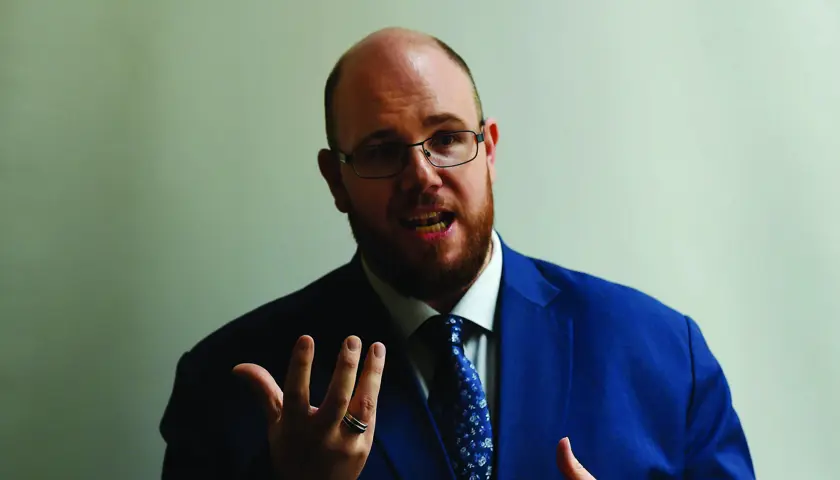
A hidden threat: test-and-trace failure edges closer
Flaws in government planning, cuts to budgets, a lack of transparency, and, in England, a reliance on the private sector has battered doctors’ confidence in test and trace
‘This disease is still killing people – we are now around where we were just before lockdown and we are seeing significant outbreaks in countries such as Germany where lockdown has been released.’
Ask Justin Varney, director of public health for Birmingham, why an adequate test-and-trace system is important, particularly with no vaccine available, and the answers are as clear as politicians often wish theirs are; this virus has not gone away, another wave of infection varying from manageable to catastrophic is likely and with another wave could come a further entrenchment of inequalities in society.
Until early June there was no comprehensive, functioning test-and-trace system running across the UK. In the early days of the pandemic, local public health teams – decimated by austerity – had attempted to keep pace with numbers but soon ran out of capacity.
And even in those areas of the country where local relationships and access to university facilities meant continuation was possible, a lack of lab capacity, far more available in Germany for example, hindered progress and national strategy was lacking.
Perhaps most damningly of all, successive Governments have been accused of having made a choice not to have the capacity to deal with this sort of pandemic.
Speaking to The Doctor, the former health secretary and now chair of the Commons health and social care select committee Jeremy Hunt says: ‘The main mistake was that we focused our preparation on pandemic flu rather than a SARS-like virus, all our thinking was geared to the way flu-type viruses behave – that there was no need to increase PPE [personal protective equipment] stocks or testing capacity.
‘I think that was where the mistake was during the period I was health secretary. I think in terms of test and trace the evidence from all over the world shows the more localised the approach, the more successful – in Germany the corona detectives and the role of local government in Korea, it’s highly localised.
‘We chose not to have that capacity because our mindset was a flu pandemic where the virus spreads so quickly that after a certain level of transmission you don’t try to isolate people any more and you accept that. It was contain, delay and mitigate and that is not the approach Korea, Singapore or Germany took.’
But these decisions were not the only problems contributing to a failure to test and trace to suppress infection and manage this pandemic. The 2012 Health and Social Care Act split public health from the NHS and left it in local authorities vulnerable to massive spending cuts and decimating capacity and expertise for exactly this sort of situation.
Soon overwhelmed
Public health medicine consultant and BMA public health committee member Penelope Toff says: ‘Over several years there has been decreased local and public health laboratory capacity and increased fragmentation in the public health system, so that although at the beginning of this pandemic there was contact tracing going on, by the middle of March the numbers of cases were just too high for that to be a feasible approach at the scale required.
‘What we heard from the Government was, “that’s the phase we were in and now we’ve moved on to the next one” but the reality is that most of the countries which have dealt very much better with COVID-19, continued to do contact tracing at the necessary scale to make it successful, along with other measures like self-isolation and social distancing.’
In a turn of events that would be welcome if the circumstances were not so tragic, the Government has pumped around £300m into local public health teams to do their part in test and trace and crisis planning. In Birmingham that equates to around £8m – which comes after several years of cuts totalling £5m in Dr Varney’s team.
Most of the countries which have dealt better with COVID-19, continued to do contact tracing
Dr Toff
But money alone isn’t enough.
As Professor Jim McManus, vice president of the Association of Directors of Public Health, wrote recently: ‘While the additional funding of £300m for local councils is welcome, delivering these plans will require much more than money – a fully operational NHS test-and-trace service, high-quality and timely data flows, the right levels of capacity in all parts of local government and the health and care system, and strong national impetus to promote the public health messages that we all know save lives.’
The Government has publicly made test and trace a priority – as Professor McManus has stated it should be.
In England the idea is that if you develop coronavirus symptoms and test positive for the disease you will be contacted and asked to log on to a website where personal details, places you have visited and names of those you have been in contact with should be submitted.
Close contacts will then be contacted and told to stay at home for 14 days, even if they don’t have symptoms. The Government has suggested the scheme will be ‘world beating’.
Expertise ignored
Yet even now with test and trace at the top of the Government’s strategy – easing lockdown and paying for adverts on people’s television sets about the importance of the project – this is a process beset with problems.
The first two weeks of statistics made available suggest at least a third of people are not providing their contacts to contact tracers and the ‘NHS’ test-and-trace system in England only reached around 10 per cent of the people the Office for National Statistics calculated were infected.
Not only that but much of the process has been contracted out to private firm Serco in a multimillion-pound deal – and professionals on the ground are reporting a lack of transparency and delays in receiving test results.



